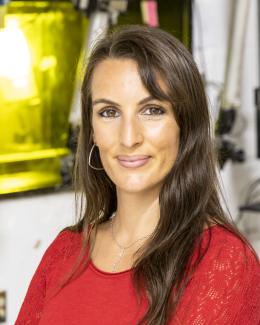Abstract
The SiC fuel matrix for advanced gas-cooled high temperature reactors as part of the Transformational Challenge Reactor program serves as the fuel particle container structure, a barrier to fission gas release, and a heat transfer medium. Its performance is particularly important because the fuel matrix must demonstrate good structural stability and thermal behaviors. An additive manufacturing methodology combining a binder jet 3D printing process with chemical vapor infiltration (CVI) for the production of SiC was recently developed. In this study, post irradiation examination by transmission electron microscopy shows that defect accumulation within the printed particles is very similar to other forms of high-purity SiC. However, damage accumulation was not directly observed in the CVI matrix because black spot damage and dislocation loops are difficult to image within the nanoscale highly faulted CVI matrix and because interstitial defects may rapidly annihilate at the stacking faults. Therefore, electron energy loss spectroscopy (EELS) analysis was used to analyze defect swelling in both the printed particles and the CVI matrix. The EELS analysis helped reveal that the radiation-induced swelling in the CVI matrix is similar to that of the printed SiC particles. This work shows that 3D printed SiC has behavior that is comparable to SiC processed by other means and that 3D printing could serve as a suitable processing technique for high-purity SiC for nuclear applications.





